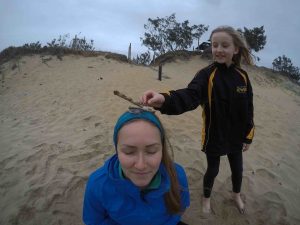There is so much I want to write about, to get the daily buzz of the blog, but blogs don’t last, and don’t pay the bills.
 What’s important to me is the pic, below, and everything I can do to help them succeed.
What’s important to me is the pic, below, and everything I can do to help them succeed.
I’ll work on books (which also don’t pay the bills, but may last longer).
Julian Kolsut of Chek reports that a Parksville family is at the B.C. Children’s Hospital in Vancouver this weekend after their two-year-old toddler contracted an E. coli Infection — that his father Aaron Hughes says was not diagnosed until it was almost too late.
“Be persistent… if we didn’t stick to our guns and react, he would be dead right now,” said Hughes.
It all started when 2-year-old Jaxon starting to act “off” on Tuesday, both of his parents thought he may have had heatstroke and made sure to take him out of the sun and keep him hydrated.
“He was out in the sun and he became really lethargic really fast, didn’t have an appetite, a fever kicked in quickly and then the diarrhea started,” said Aarons wife Jolene Secord.
After contacting the nurse’s line, they were given the same advice, but eventually Jaxon started vomiting. A visit to the walk-in clinic resulted in a different diagnosis, a possible bacterial infection, but while at the clinic they noticed blood in his diaper.
“They did take a swab of his green bowl movements but sent us home,” said Secord.
They were told to continue keeping an eye on him and taking care of him.
The parents say on Wednesday the vomiting and bleeding got worse, and after rushing Jaxon to the Nanaimo Regional General Hospital they were told again it may be a bacterial infection, and that he may have had a torn fissure. After speaking to a nutritionist they were sent home.
Aaron says he couldn’t see the fissure, and was confused the mucus coming out of his toddler’s behind was also bloody.
When his 18-year-old daughter called him when he was shopping for vaseline for his son in Nanaimo on Thursday and was told Jackson’s symptoms were worse, he told them to call and ambulance at that he would meet them at the hospital.
“We weren’t wasting any time… but they couldn’t find his stools [that were sent in for testing]” said Hughes.
“The doctor then came into the room [the next day] and said, “I think we found the source” and he didn’t look too happy, [the doctor] tracked down the stools and said the test came back positive for E. coli O157:H7.”
He was immediately airlifted to the B.C. Children’s Hospital in Vancouver and currently, among many other issues with his health, does not have any functioning kidneys and has a damaged pancreas.
Jaxon is undergoing dialysis, transfusion and other treatments, and his mom says his state changes by the hour.
“At this point, they don’t see the kidneys waking up… it could be a long-term thing… every hour seems to change for Jaxon,” said Secord. “We will see a positive, we will see a negative, we will see a positive.”
The exact cause is unknown, but the family says they suspect it came from deer feces, as the animal can carry the O157:H7 strain. They think Jackson may have come in contact with it outside. Contaminated food is also a possibility.
“We almost have a family of deer living [on our property]” said Hughes. “We have apple trees on our property and they [the deers] live off that stuff, and that can transport diseases.”
Both parents also say the unfortunate incident is a reminder to always listen to your gut.
“If we would have stuck to what they were telling us then we would have lost him… and if we waited he could have had brain damage, heart failure,” said Hughes.

DCIM102GOPROGOPR2675.JPG
 Sodexo, a Delaware company, provides food and facility management services for the United States Marine Corps Depot in San Diego. Mr. Grano is represented by Marler Clark, the food safety law firm, and Gordon and Holmes, a local San Diego firm.
Sodexo, a Delaware company, provides food and facility management services for the United States Marine Corps Depot in San Diego. Mr. Grano is represented by Marler Clark, the food safety law firm, and Gordon and Holmes, a local San Diego firm.







